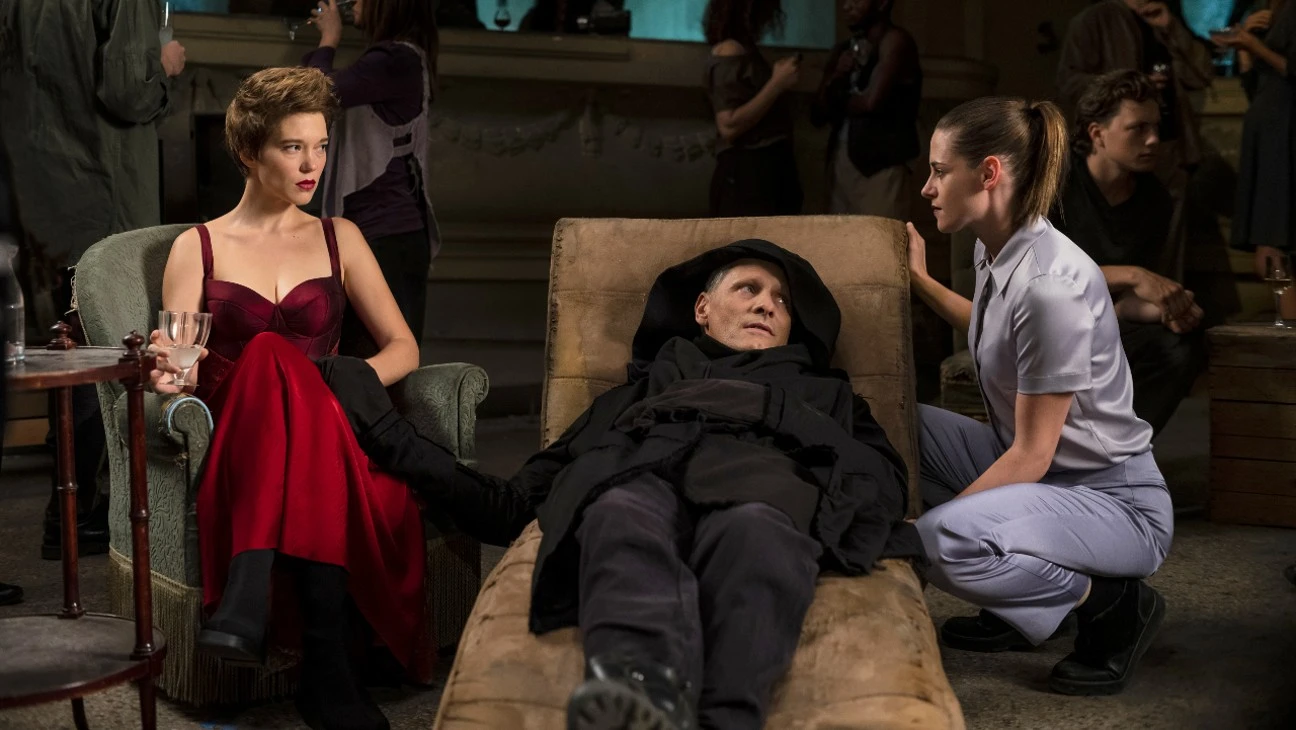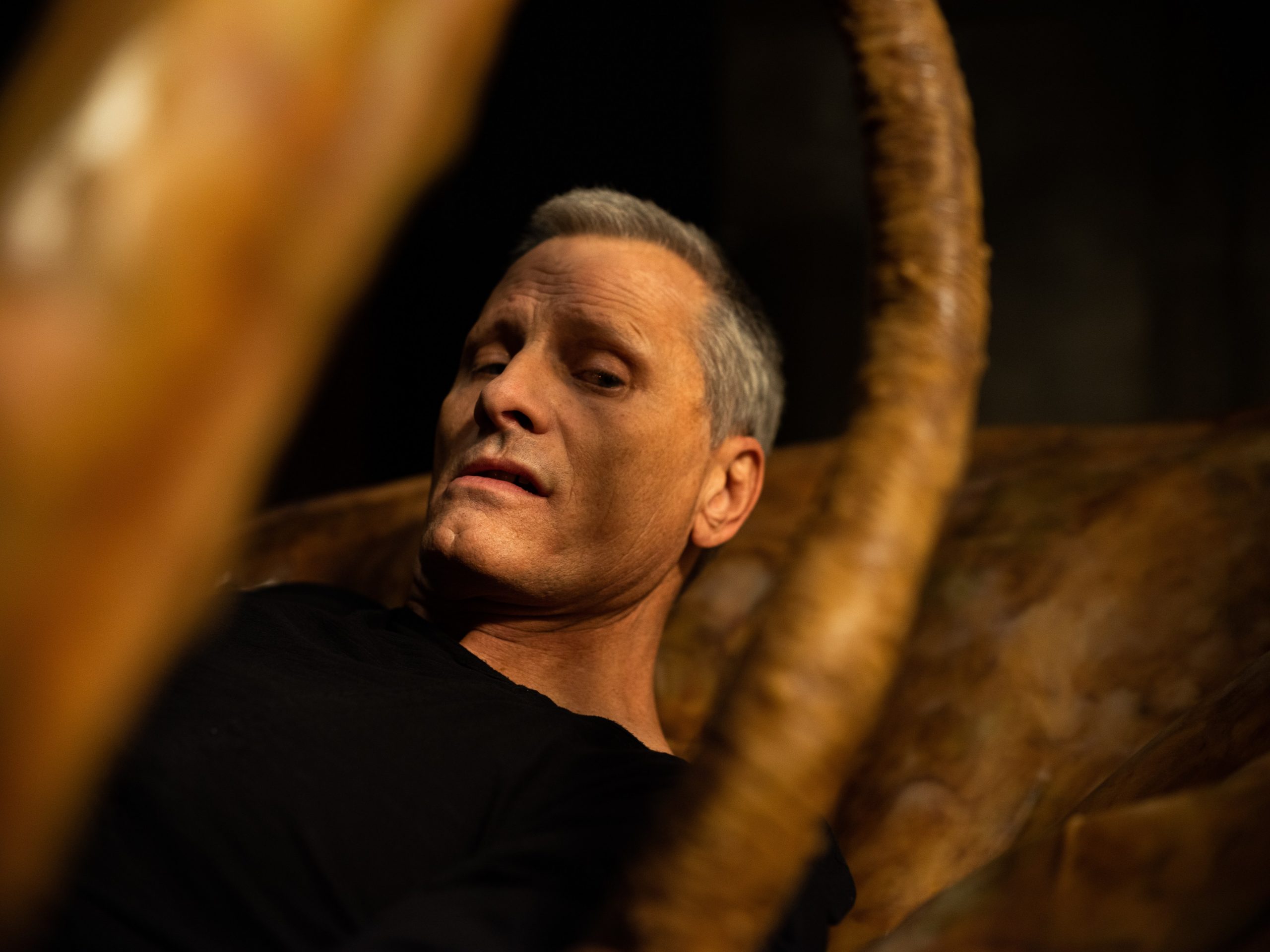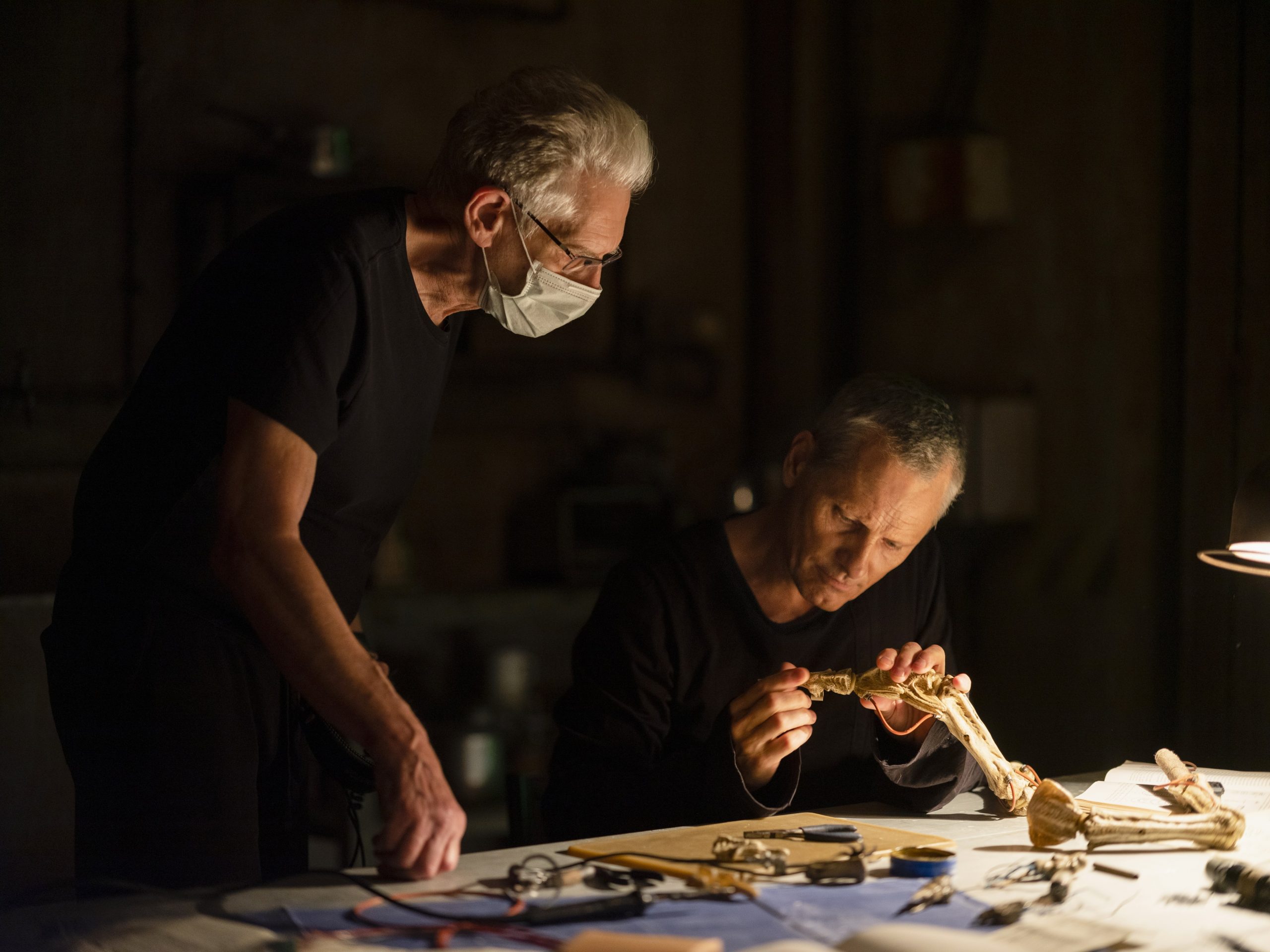
The master of body horror, David Cronenberg, is back. The Crash and The Fly director hasn’t made a feature film since 2014’s Maps to the Stars but amazed and, frankly, grossed out the audiences at Cannes earlier this year with his new film, Crimes of the Future.
Crimes of the Future in many ways is a return to his roots, exploring familiar themes, all centred around the human body and how it can be violated and corrupted.
Viggo Mortensen plays Saul Tenser, a man capable of growing completely new organs which he then theatrically removes with the help of his partner Caprice, in front of a live audience.

But where does one begin with fake organs? We speak to the film’s prosthetics team, Alex Anger and Monica Pavez about their approach to creating slimy, new organs.
How did you get involved with Crimes of the Future?
Monica Pavez: We had been working on a Canadian horror series called Slasher, which is exactly what you would expect it to be from the title. Not this past season, but in the season prior, David [Cronenberg] was actually one of the main cast members. So through that process and as Canadians and people in prosthetics, we certainly knew who David Cronenberg was, but we met him in a very different light, in that we had to put makeup on him. We were also building an entire likeness body of his to be interacted with later in the season. It was a lovely initial interaction, and we had a great time working with him on set.
There was a final press and EPK (electronic press kit) day on one of the last few days of shooting that season and David had been in for photos and interviews, and the body was still in the studio. So that was the first time he came by and [said] that’s a cool thing. Things were busy, and everyone’s got a schedule to keep, so it was a very brief interaction in terms of him seeing his fake self.
Alex Anger: He had initially, when we had done the cast of him, mentioned like, oh, I’m shooting a thing and I’m going to need some stuff.
David’s obviously known for the body horror thing. Is that the goal as someone working in makeup and prosthetics, to work with David Cronenberg?
Alex Anger: Yes, it’s so funny, because we’ve had this realisation very late in the game of just how big of a deal it was. Because our introduction to him was not as a director, but as an actor, on somewhat more of a level playing field in terms of how you interact with people on a film set. The timeline for the builds of everything, before going to Greece (where the film was shot) and making everything here was so tight that we really didn’t have time to focus on how big of a deal it was.
And it wasn’t until people were finding out and their reactions, that it hit home like oh my god, I think we need to be more intimidated than we are. But there was no time because there’s still so much work to do.
Monica Pavez: I’m so grateful we didn’t have any brain time.
Alex Anger: But it was absolutely amazing. There’s very few people that have as iconic a catalogue of movies, from a prosthetic standpoint. You’re getting to create such unique visuals for something that you also get to have so much input in, and how they actually come about and how they look. It’s a very unique opportunity that we’re incredibly thankful to have been given.
View this post on Instagram
How difficult is it to infuse or blend your vision with the director’s?
Monica Pavez: It’s interesting. There are moments where we are approached, and you very much get the feeling that as much as we are artists, so to speak, creating this thing, you are more in the role of a technician. There is a vision that exists and we have the skill set to interpret what steps need to take place to do this.
Of course, we will forever offer the input so that it becomes a successful thing of like, these are the limitations if we approach it this way, and so on and so forth.
Again, because it’s David Cronenberg, we didn’t know what that looked like. And it was just a joy, because as much as he obviously has a version in his head, he’s super open to building that world with other people.
Alex Anger: It’s nice to be pointed in a direction, so that you’re not aimlessly designing or making things with no path, but it is also the freedom of this is the direction we’re headed but it doesn’t have to be exactly here, it’s just within this realm. It’s pretty rare to have that level of trust, that you will create what it is they’re looking for.
What’s so great about the film is that there’s this very futuristic, almost like a fantasy element, but it’s also quite grounded in medical realism. So how did you start designing the organs?
Alex Anger: Carol Sofia, the production designer had a concept artist that she was working with, for a lot of the set designs. There had been some talk of existing designs for Brecken’s organs and whatnot, because those are supposed to be something that is not recognisable, it doesn’t exist.
It came down to looking at marine life and their organs and tumours as well, stuff that would be recognisable as being organic, but also immediately unrecognisable as human anatomy. People have an idea of what a liver looks like, what lungs look like, what a heart is, there’s an awareness of that.
View this post on Instagram
What are the prosthetic organs made out of?
Monica Pavez: It’s silicone. Then we have a bunch of additives that will change the softness, depending on needs and wants, whether that’s a hard piece that’s never interacted with, or whether it’s skin, or a wound, or an organ, for example, that’s being interacted with on camera that you’re gonna want to move and wiggle–
Alex Anger: Which was interesting, because so much of this is exactly about interacting with the body. Everything was squishy. And an interesting challenge that we came upon was the tattooing of the organs. Oftentimes, people will practise tattooing on silicone, but it’s usually much firmer. But because these needed to be interacted with, they needed to be squishy.
We worked with a tattoo artist, who was also working in one of the shops in Greece, Sophia, and she did these phenomenal tattoos onto the organs that had been designed by Carol. And they’d collaborated on the look of those tattoos. Neither of us are tattoo artists and she did a phenomenal job.

David Cronenberg on set with Viggo Mortensen
Was there ever any more scars or anything on the bodies? There’s not a whole lot of scars, considering that they’ve done surgery a lot.
Alex Anger: That was a conversation actually with David of what healing looks like in this world. Ultimately the decision was to leave it ambiguous because there are the characters that have scars from the surgeries they’ve done on themselves. Then you look at Viggo’s character who is doing all of these performance surgeries and there’s not a lot of scarring. Ultimately, it didn’t need to be dwelled on too much and it was left up to the audience to interpret.
Crimes Of The Future will be released in UK and Irish cinemas on the 9th September



